Description
A mini chiller is a compact water-cooled air conditioning system that utilizes a refrigeration cycle to cool air. It operates through a series of stages, including:
1. Air Intake: Air is drawn into the mini chiller through a network of air ducts.
2. Water Cooling: The air passes over a cooling coil, where heat is transferred from the air to the water.
3. Chilled Water Distribution: The chilled water is then circulated through pipes to fan coil units or air handlers, where it cools the air that is distributed throughout the building.
Components of a Mini Chiller
-
Compressor: The compressor compresses the refrigerant and sends it to the condenser.
-
Condenser: The condenser releases the heat absorbed from the air into the surrounding environment.
-
Refrigerant Piping: The refrigerant piping carries the refrigerant between the compressor and condenser.
-
Expansion Valve: The expansion valve reduces the pressure of the refrigerant and sends it to the evaporator.
-
Evaporator: The evaporator absorbs heat from the water, causing the refrigerant to evaporate.
-
Fan: The fan helps to circulate the air through the mini chiller.
-
Controller: The controller regulates the operation of the mini chiller.
Advantages of Mini Chillers
Mini chillers offer several advantages, including:
- Precise temperature and humidity control in small spaces: Mini chillers can maintain the air in small spaces at a desired temperature and humidity level.
- Suitable for installation in small spaces: Mini chillers are suitable for installation in small spaces.
- Lower cost than chillers: Mini chillers are less expensive than chillers.
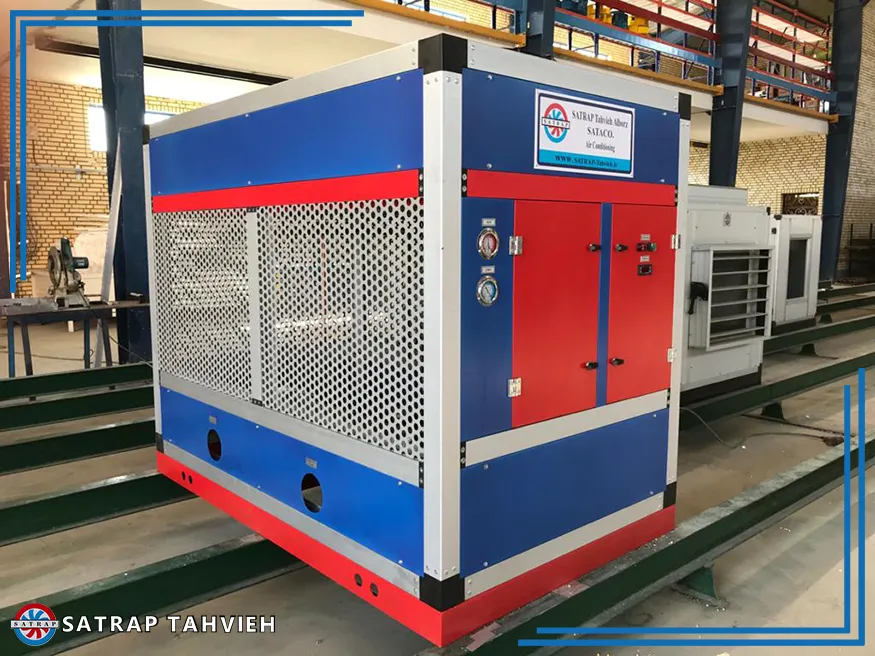
Disadvantages of Mini Chillers
Mini chillers do have some limitations, including:
Limited Airflow Capacity: Mini chillers are not suitable for large spaces.
Higher Energy Consumption Than Fan Coils: Mini chillers consume more energy than fan coils.
Types of Mini Chillers
Mini chillers are available in different types, such as air-cooled and water-cooled mini chillers. The type of this product is selected based on environmental conditions and user needs.
Air-Cooled Mini Chiller
An air-cooled mini chiller is an air conditioning unit that uses air to cool the refrigerant. Air-cooled mini chillers are suitable for environments that do not have access to cold water.
Advantages of Air-Cooled Mini Chillers
Air-cooled mini chillers offer several advantages, including:
Lower Cost Than Water-Cooled Mini Chillers: Air-cooled mini chillers are less expensive than water-cooled mini chillers.
Ability to be Installed in Various Environments: Air-cooled mini chillers can be installed in various environments.
Disadvantages of Air-Cooled Mini Chillers
Air-cooled mini chillers also have some drawbacks, including:
Requires More Space Than Water-Cooled Mini Chillers: Air-cooled mini chillers require more space for installation than water-cooled mini chillers.
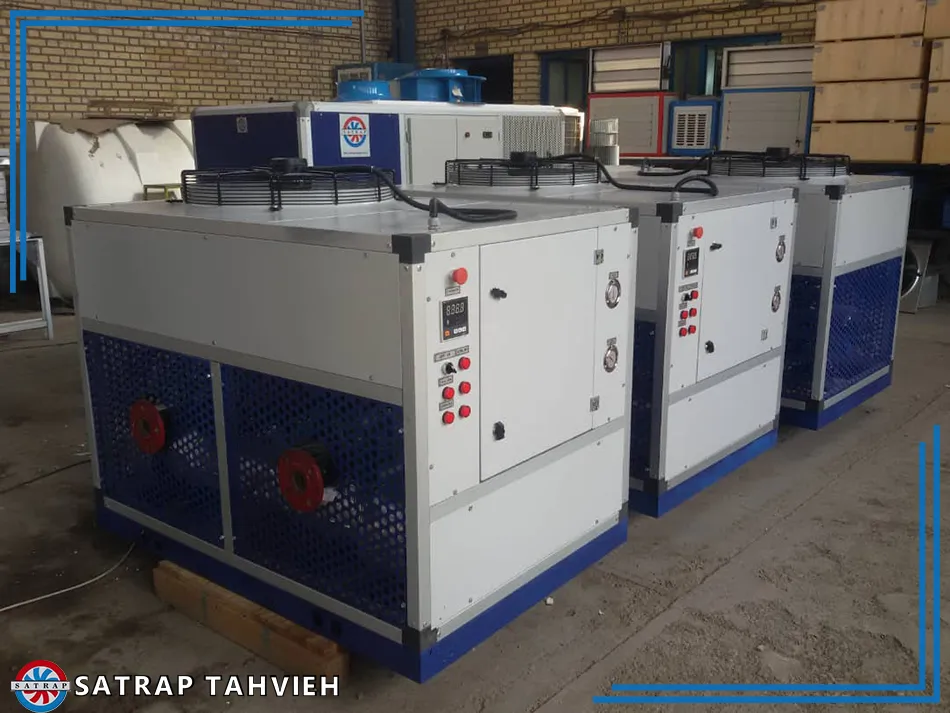
Mini Chiller Water Cooled
A mini chiller water cooled is an air conditioning unit that uses chilled water to cool the refrigerant. The refrigerant then cools the ambient air. Mini chiller water cooled is suitable for environments with access to chilled water.
Components
A mini chiller water cooled consists of various components, including:
- Compressor: The compressor compresses the refrigerant and sends it to the heat exchanger.
- Heat exchanger: The heat exchanger transfers the heat from the air to the refrigerant and cools the air.
- Expansion valve: The expansion valve reduces the pressure of the refrigerant and sends it to the evaporator.
- Evaporator: The evaporator vaporizes the refrigerant and absorbs the heat from the air, cooling the air.
- Fan: The fan passes the air through the evaporator.
- Condenser: The condenser condenses the refrigerant and transfers its heat to the water.
- Water pump: The water pump transfers the chilled water to the condenser.
- Water heat exchanger: The water heat exchanger transfers the heat from the condenser to the chilled water.
- Controller: The controller controls the operation of the mini chiller.
Advantages
A mini chiller water cooled has several advantages, including:
- Requires less space than a mini chiller air cooled: A mini chiller water cooled requires less space for installation than a mini chiller air cooled.
- More efficient than a mini chiller air cooled: A mini chiller water cooled is more efficient than a mini chiller air cooled, as it uses less energy to cool the same amount of air.
- Quieter operation than a mini chiller air cooled: A mini chiller water cooled operates more quietly than a mini chiller air cooled, as it does not have a fan to cool the condenser.
Disadvantages
A mini chiller water cooled also has some limitations, including:
- More expensive than a mini chiller air cooled: A mini chiller water cooled is more expensive than a mini chiller air cooled, due to the additional components required.
- Requires access to chilled water: A mini chiller water cooled requires access to chilled water to operate.
The main difference between air-cooled and water-cooled mini chillers:
The main difference between air-cooled and water-cooled mini chillers is how they cool the refrigerant.
-
Air-cooled mini chillers: use air to cool the refrigerant. They are typically more affordable and easier to install than water-cooled mini chillers. However, they are also less efficient and can be noisy.
-
Water-cooled mini chillers: use chilled water to cool the refrigerant. They are more efficient and quieter than air-cooled mini chillers. However, they are also more expensive and require a source of chilled water, such as a cooling tower or a dedicated water chiller.
Which type of mini chiller is right for you?
The type of mini chiller that is right for you depends on your specific needs and requirements.
-
If you do not have access to chilled water, an air-cooled mini chiller is the best option.
-
If you do have access to chilled water, a water-cooled mini chiller may be a better choice.
Mini chillers are an efficient and cost-effective way to control temperature and humidity in small spaces. They are a popular choice for homes, offices, and other small commercial applications.
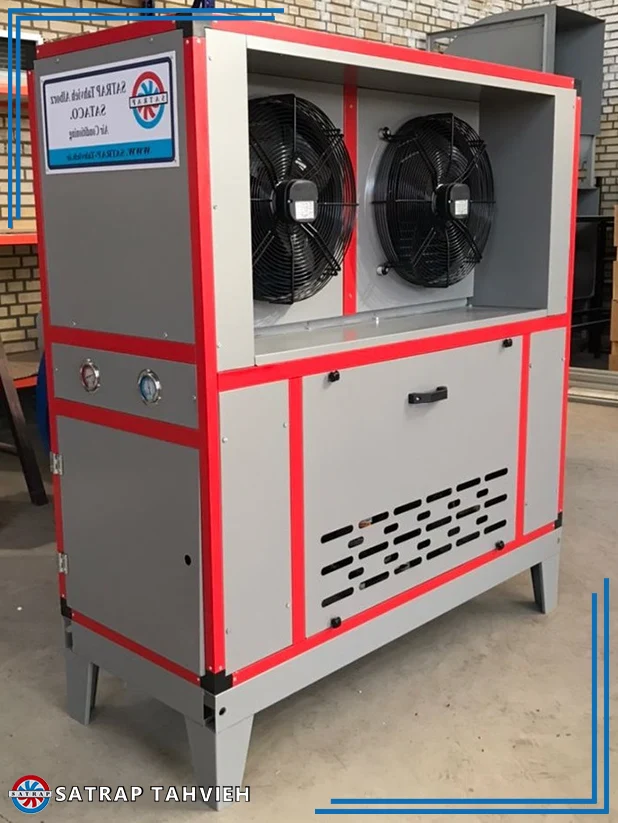
How a Mini Chiller Works
A mini chiller utilizes a vapor compression refrigeration cycle to cool air. The cycle consists of the following stages:
1. Compressor
The compressor compresses the refrigerant and sends it to the heat exchanger. The refrigerant, in its compressed state, has high pressure and temperature.
2. Heat Exchanger (Condenser)
The heat exchanger transfers heat from the air to the refrigerant, cooling the air. The refrigerant absorbs heat from the air in the heat exchanger, and its temperature decreases.
3. Expansion Valve
The expansion valve reduces the pressure of the refrigerant and sends it to the evaporator. The refrigerant, in its expanded state, has low pressure and temperature.
4. Evaporator
The evaporator absorbs heat from the air and cools it. The refrigerant absorbs heat from the air in the evaporator and evaporates.
5. Fan
The fan circulates air through the evaporator. The fan moves the air, causing it to pass through the evaporator and be cooled.
6. Air Outlet
The cooled air exits the evaporator through the fan and is directed into the environment.
Types of Mini Chillers
1. Air-Cooled Mini Chiller
In an air-cooled mini chiller, the condenser heat exchanger uses air to cool the refrigerant.
2. Water-Cooled Mini Chiller
In a water-cooled mini chiller, the condenser heat exchanger uses chilled water to cool the refrigerant.
Mini chiller applications
A mini chiller is used to control temperature and humidity in small spaces such as homes, apartments, and small shops. Mini chillers typically have a lower airflow capacity than chillers and are not suitable for large spaces.
Mini chiller applications include:
- Residential air conditioning
- Commercial air conditioning
- Industrial air conditioning
- Greenhouse air conditioning
- Aquaculture air conditioning
Differences Between Residential and Industrial Mini Chillers
Residential and industrial mini chillers are two types of air conditioning systems that use a refrigeration cycle to cool air. However, they have several key differences in terms of capacity, performance, and price.
Capacity
Residential mini chillers typically have a smaller capacity than industrial mini chillers. The capacity of a residential mini chiller is typically between 2 and 20 tons of refrigeration, while an industrial mini chiller can have a capacity of up to 100 tons of refrigeration or more.
Performance
Residential mini chillers are typically used for cooling air in small spaces such as homes, apartments, and small businesses. Industrial mini chillers are typically used for cooling air in large spaces such as factories, commercial buildings, and office buildings.
Price
Residential mini chillers are typically less expensive than industrial mini chillers. The cost of a residential mini chiller can range from \$2,000 to \$10,000, while the cost of an industrial mini chiller can range from \$10,000 to \$100,000 or more.
Other Differences
In addition to the differences mentioned above, residential and industrial mini chillers also differ in terms of the following factors:
- Type of condenser: Residential mini chillers typically use air-cooled condensers, while industrial mini chillers can use either air-cooled or water-cooled condensers.
- Type of compressor: Residential mini chillers typically use scroll compressors, while industrial mini chillers can use either scroll compressors or reciprocating compressors.
- Noise level: Residential mini chillers are typically quieter than industrial mini chillers.
- Efficiency: Industrial mini chillers are typically more efficient than residential mini chillers.
Conclusion
Residential and industrial mini chillers are both effective air conditioning systems. However, the best type of mini chiller for a particular application will depend on the specific needs of that application.
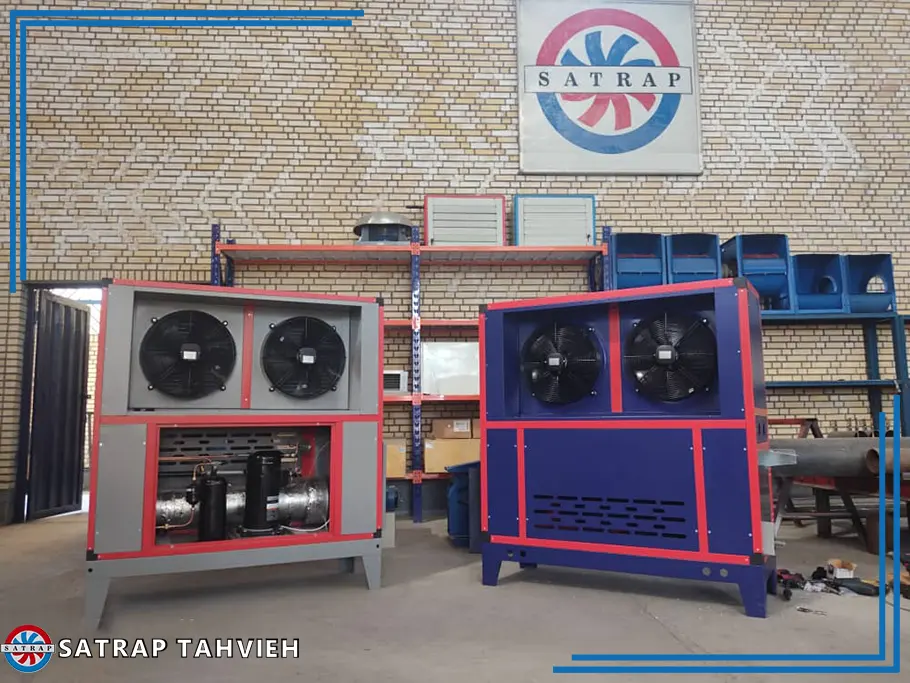
Chiller vs. Mini Chiller: Key Differences
Chillers and mini chillers are both HVAC (heating, ventilation, and air conditioning) devices used for cooling. However, they have several key differences in terms of capacity, performance, price, and other features.
Capacity: Chillers have a higher capacity than mini chillers. Chiller cooling capacity can range from a few tons of refrigeration (TR) to hundreds of TR, while mini chiller cooling capacity typically ranges from 2 to 20 TR.
Performance: Chillers are typically used to cool air in large spaces such as factories, commercial and office buildings. Mini chillers are typically used to cool air in smaller spaces such as homes, apartments, and small shops.
Price: Chillers are typically more expensive than mini chillers. Chiller prices typically start at several billion tomans, while mini chiller prices typically range from 50 to 100 million tomans.
Other differences: In addition to the above differences, chillers and mini chillers also differ in terms of the following:
- Compressor type: Chillers typically use reciprocating, rotary, or scroll compressors, while mini chillers typically use scroll compressors.
- Refrigerant type: Chillers can use various refrigerants, while mini chillers typically use R410A refrigerant.
- Condenser type: Chillers can use air-cooled or water-cooled condensers, while mini chillers typically use air-cooled condensers.
- Fan type: Chillers can use centrifugal or axial fans, while mini chillers typically use axial fans.
Chillers and mini chillers are both HVAC devices used for cooling. However, they have several key differences in terms of capacity, performance, price, and other features. The choice of which device to use depends on the specific needs of the application.
Mini Chiller vs. Duct Split: A Comparison
Mini chillers and duct splits are both HVAC systems that can be used to cool air. However, there are some key differences between the two systems in terms of capacity, performance, price, and other features.
Capacity: Mini chillers have a lower cooling capacity than duct splits. The cooling capacity of a mini chiller typically ranges from 2 to 20 tons of refrigeration, while the cooling capacity of a duct split can range up to several hundred tons of refrigeration.
Performance: Mini chillers are typically used to cool air in smaller spaces such as homes, apartments, and small businesses. Duct splits are typically used to cool air in larger spaces such as commercial and office buildings.
Price: Mini chillers are typically less expensive than duct splits. The price of a mini chiller typically ranges from 50 to 100 million Tomans, while the price of a duct split typically starts at 100 million Tomans.
Other Differences: In addition to the differences mentioned above, mini chillers and duct splits also differ in terms of the following:
Which System is Right for You?
The choice between a mini chiller and a duct split depends on a number of factors, including the size of the space you need to cool, your budget, and your specific needs.
The following factors affect the price of a mini chiller
Air handling capacity: The air handling capacity of a mini chiller is determined by its size. A mini chiller with a larger air handling capacity will have a higher price.
Compressor type: A mini chiller with a scroll compressor is usually more expensive than a mini chiller with a reciprocating compressor.
Refrigerant type: A mini chiller with R410A refrigerant is usually more expensive than a mini chiller with R22 refrigerant.
Condenser type: A mini chiller with a water-cooled condenser is usually more expensive than a mini chiller with an air-cooled condenser.
Additional features: A mini chiller with additional features such as heating, dehumidification, and air purification will have a higher price.
In general, a mini chiller with a larger air handling capacity, scroll compressor type, R410A refrigerant type, water-cooled condenser type, and additional features will have a higher price.
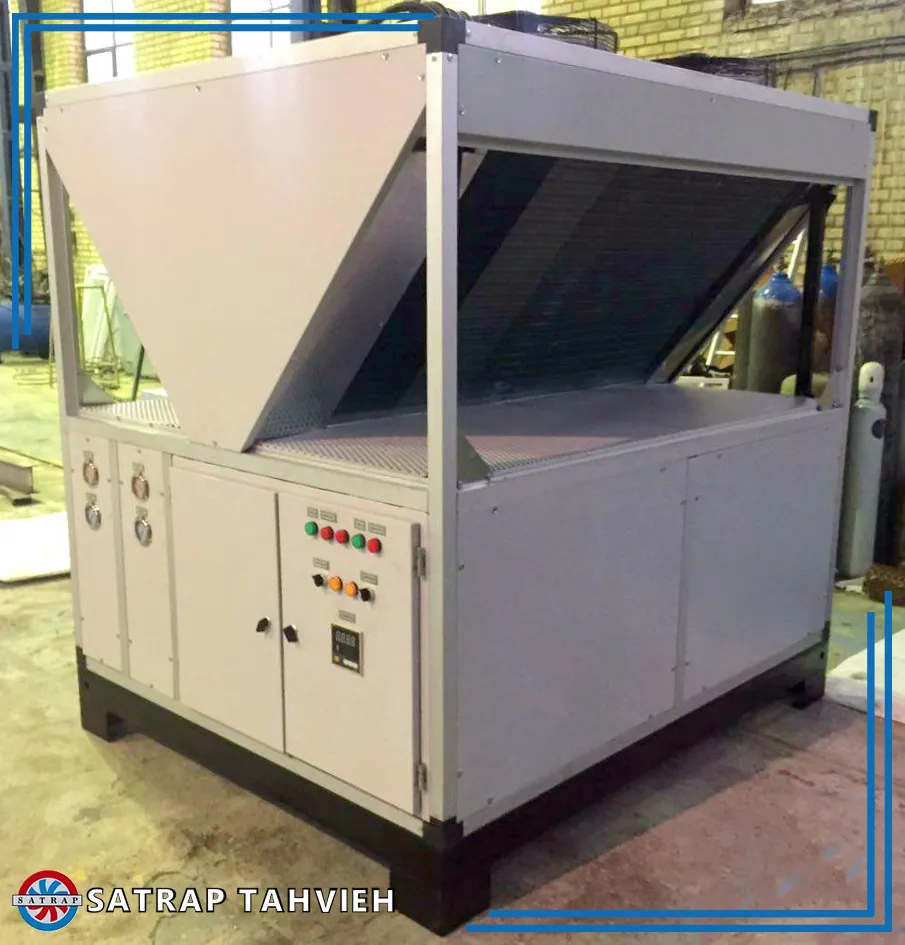
The following factors can affect the price of a mini chiller:
Brand: Well-known brands usually have higher prices. Build quality: A mini chiller with higher build quality will have a higher price. Warranty: A mini chiller with a longer warranty will have a higher price.
How to choose the right mini chiller
To choose the right mini chiller, you need to consider several factors, including:
Size of the environment: The air handling capacity of the mini chiller must be proportional to the size of the environment. Budget: The price of a mini chiller varies depending on various factors. Specific needs: Some mini chillers have additional features such as dehumidification and air purification.
Buy air-cooled chiller from Satraptahvieh Alborz
The Satraptahvieh is known as one of the leading companies active in the field of installation and commissioning of cooling and heating systems. You can contact our experienced experts to purchase and install a suitable mini chiller for your residential, commercial, or industrial complex.

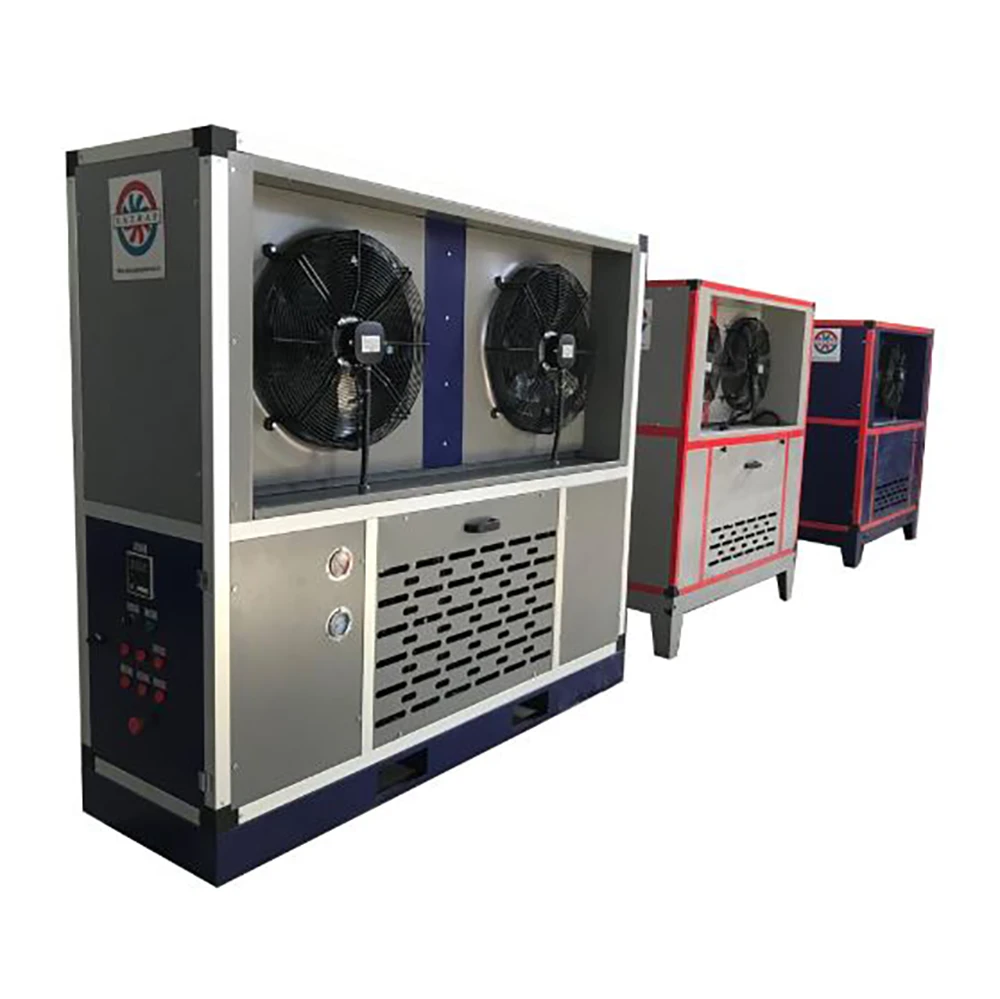

Reviews
There are no reviews yet.